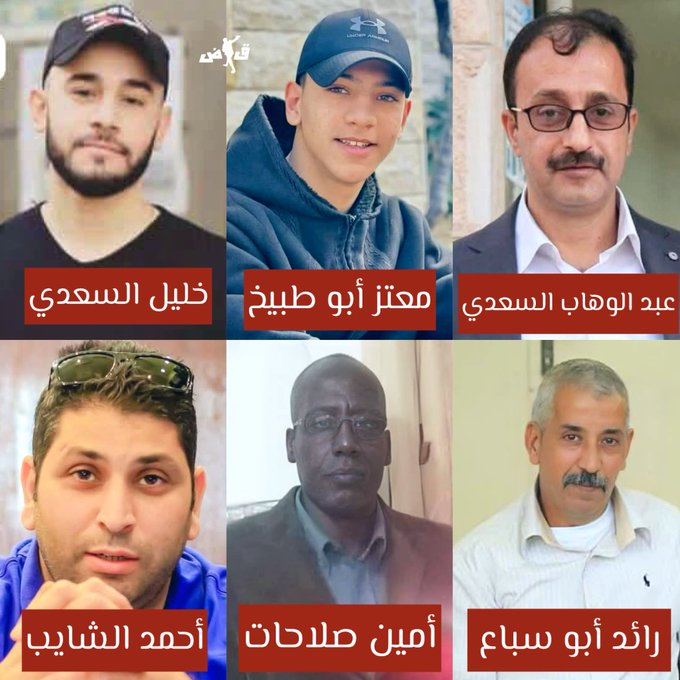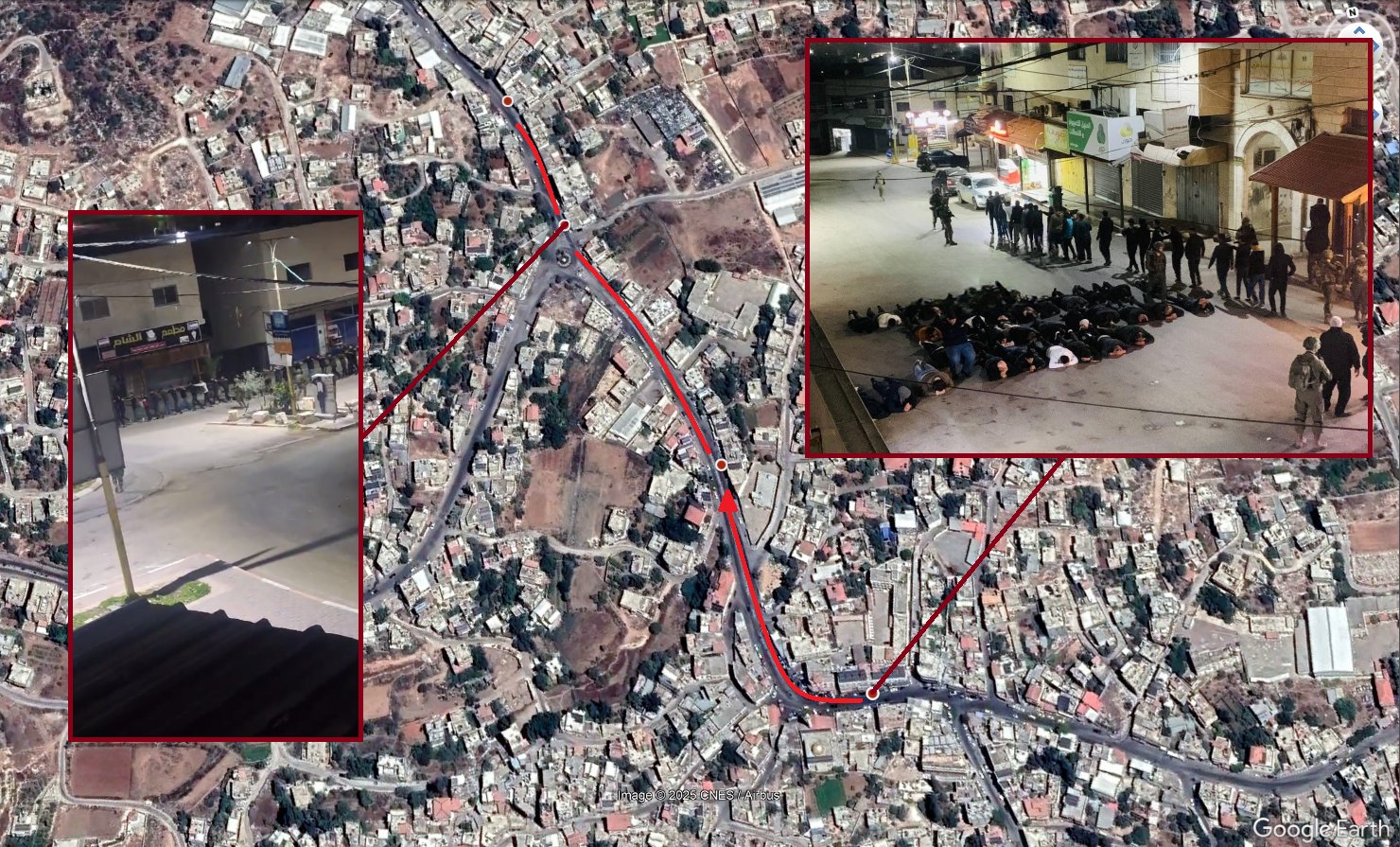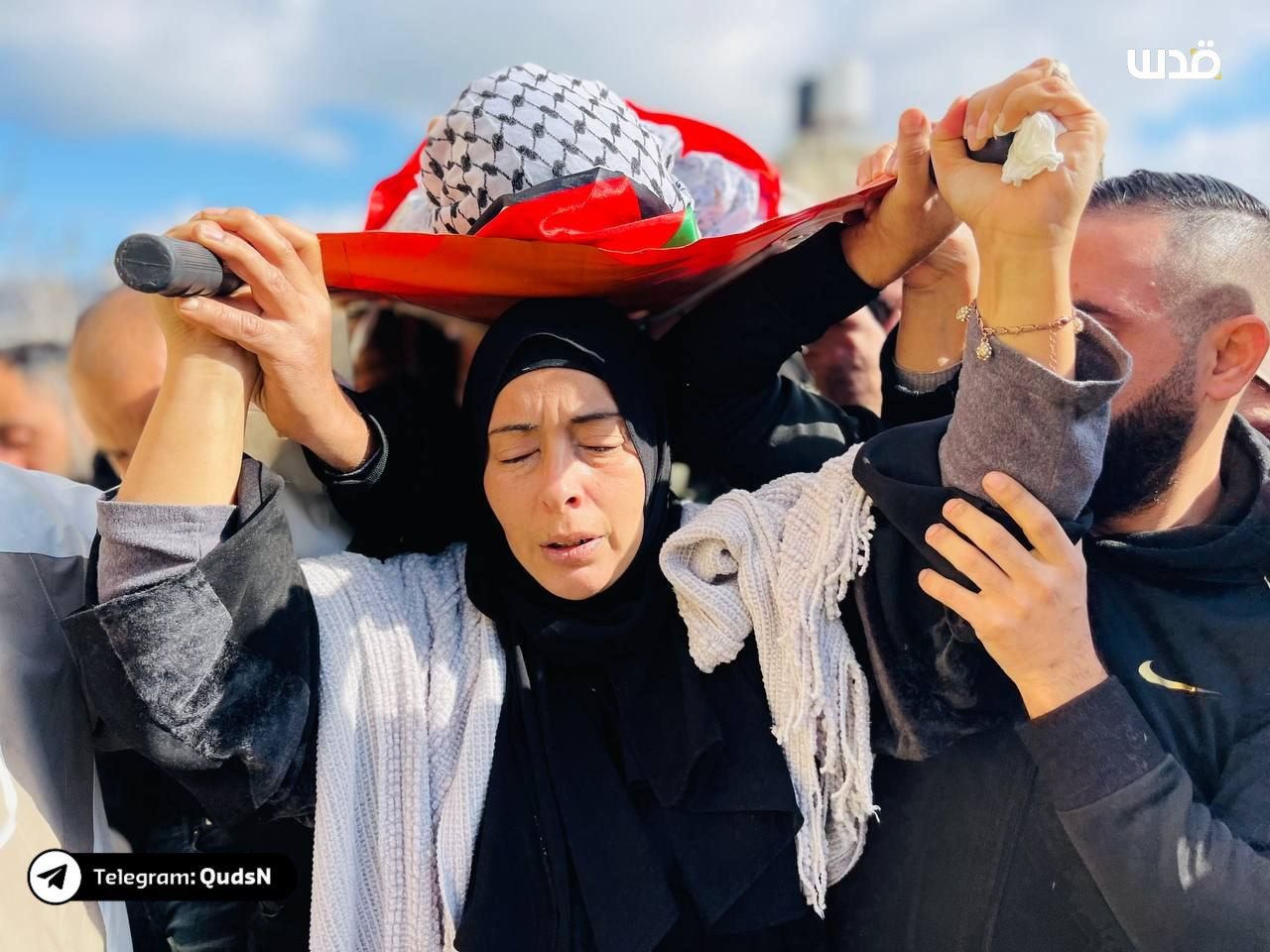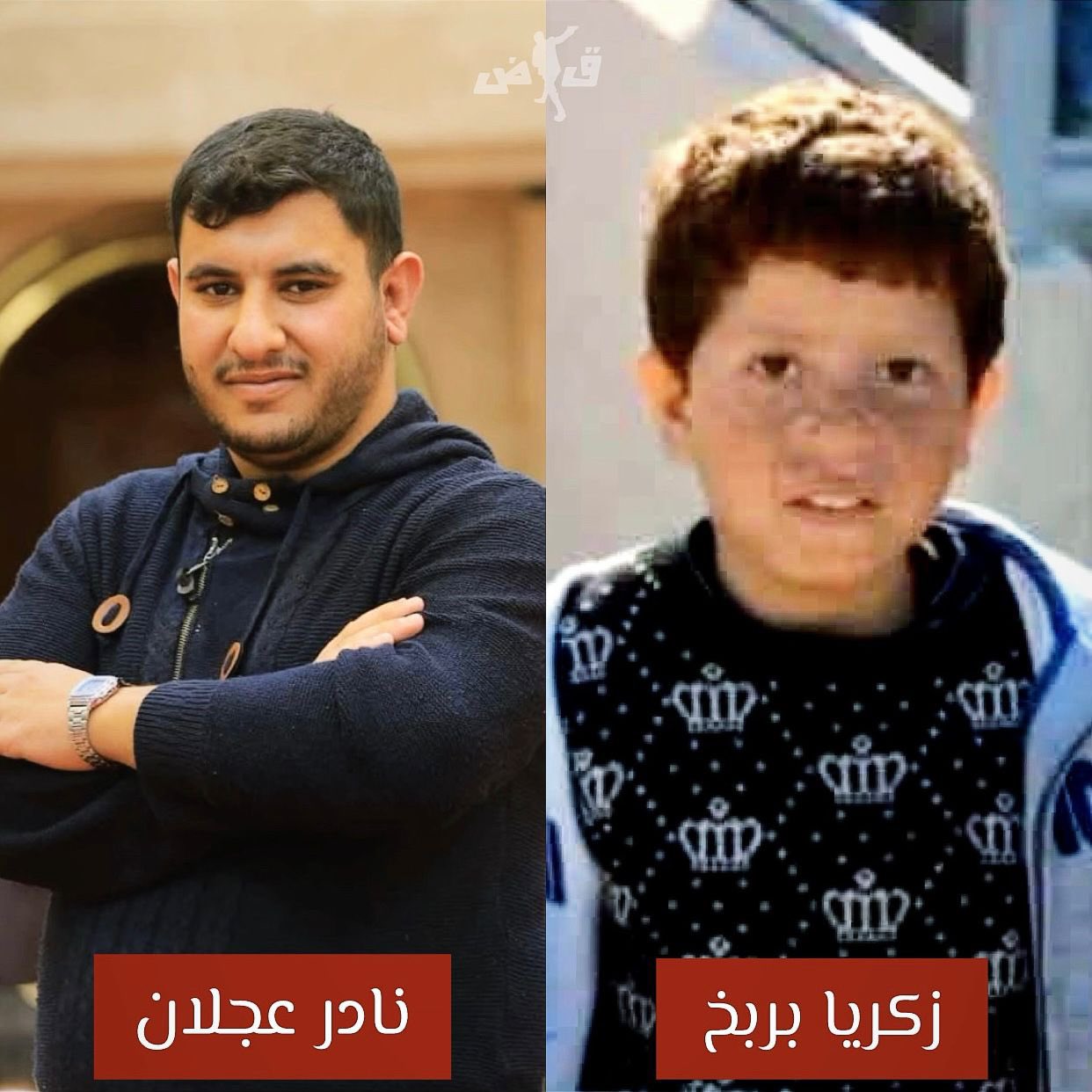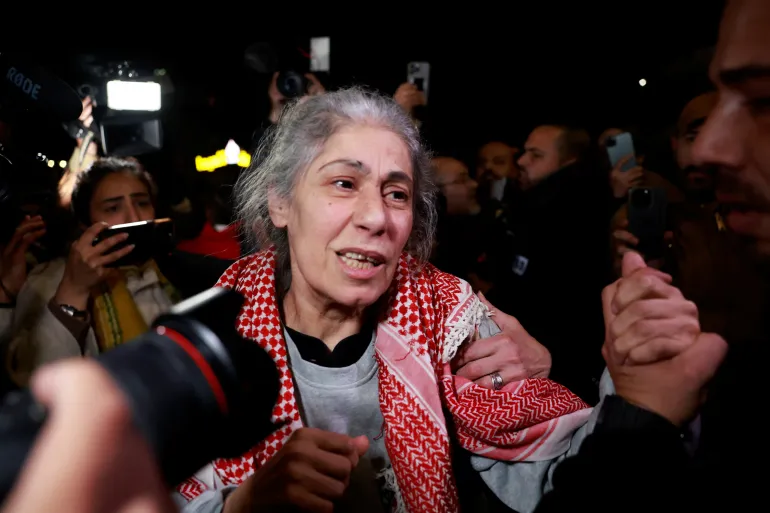
TikTok Genocide
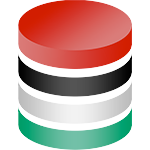
Checkpoints Obstruction campaign in the West Bank.
West Bank
22 January, 2025
Since the ceasefire agreement, Israeli forces escalated its assault on Jenin, by enforced the largest scale of road closures and checkpoints in the West Bank since the second Intifada.
- in some instances soldiers are checking a car every 30 mins then closing the checkpoint. Others reported soldiers chatting, laughing, and taking selfies while thousands of vehicles remained stuck for hours.
- The closures are enforced to prevent Palestinians from moving through cities effectively creating a siege surrounding every city from the North to the South.
- Just in Bethlehem, Israeli forces sealed the entrances/exits with 89 gates, barriers, and concrete blocks
- Social Media are used by Palestinian to inform their community about the better way to reach some location.
- The main goal in instauring checkpoints obstruction like Bethlehem, Salfit, Nablus, Jericho, Ramallah, Hebron, is to suffocate Palestinians into submission to the zionist settler colonial project.
**Increased Checkpoints and Roadblocks:**
Following the ceasefire, Israeli authorities imposed additional measures to strengthen security in the West Bank. According to reports, 146 iron gates were added in January alone, bringing the total number of roadblocks and gates in the West Bank to 898.
These barriers have significantly limited Palestinians' ability to move freely between cities and villages, often leaving them stranded for long periods.
**Military Justification vs. Public Perception:**
The Israeli military justifies the extensive use of checkpoints and gates as a security measure to apprehend militants and prevent "terrorist" attacks on Israel.
However, Palestinians and human rights organizations argue that these measures are punitive and contribute to a broader strategy of control and suppression.Critics, including Israeli human rights groups, suggest that the Israeli government’s actions reflect a shift of focus from Gaza to further control and suppression of Palestinians in the West Bank.
**Consequences on daily lives**
- The new security measures have disrupted daily activities. For example, residents of towns like Taybeh and Birzeit have reported waiting hours at checkpoints, sometimes stuck in their cars from late afternoon to the early morning.
- Palestinians describe the new conditions as being similar to living in a "cage," where they can only go out during the day and are forced to return home by evening due to the restrictions.
- Impact on ability to work, with Palestinians losing significant amounts of work hours due to long waiting times at checkpoints. This further exacerbates economic strain and complicates daily planning.
- being unable to make even short-term plans due to the unpredictable nature of checkpoint controls.The inability to plan ahead and the feeling of being under constant surveillance contribute to a growing sense of stress and insecurity.
**Qalandia checkpoint obstruction**
Qalandiya is an Israeli military checkpoint located between Ramallah and Jerusalem in the occupied Palestinian territories. It is a crucial transit point for Palestinians traveling between the northern and southern parts of the West Bank. Approximately 9,000 vehicles pass through Qalandiya checkpoint daily, highlighting its heavy usage and importance for local commuters. Due to Israeli traffic restrictions, the adjacent road has become an essential route for movement from Ramallah to the southern West Bank.
**Nablus area obstruction**
The Israeli forces tighten their measures at the military checkpoints surrounding the city of Nablus. They set up 10 permanent military checkpoints around the city of Nablus, installed 36 iron gates at its entrances and the surrounding villages, and closed more than 47 sites with earth mounds, preventing thousands of local residents from reaching their homes and destinations
On February 2, for nearly two weeks, Israeli forces have tightened military measures at checkpoints around Nablus, causing severe traffic. They have also set up flying checkpoints, searching vehicles and checking citizens' IDs.
**On January 26 :**
**Salfit:**
A military checkpoint was established near the entrance to Qarawat Bani Hassan, causing major traffic congestion. Entrances to the city of Salfit and the villages of Bruqin, Kifl Haris, Deir Istiya, and Kafr Ad-Dik were blocked by metal gates, limiting access.
**Bethlehem:**
The Israeli military sealed the main entrance to the village of Al-Manshiya by locking its iron gate late last night. This closure cuts off the only road connecting rural southern areas to Bethlehem, a key city for services and commerce.
**Northeastern West Bank (Jordan Valley):**
Israeli forces strengthened restrictions at the Tayasir and Hamra checkpoints in the northern Jordan Valley. Palestinian vehicles were blocked from passing through these checkpoints, causing long queues and significant delays.
**Ramallah Area (Central West Bank):**
The Israeli military significantly increased restrictions around the **city of Ramallah**. Key roads were closed, including the Birzeit-Attara gate, the northern entrance to Al-Bireh, and the Nabi Saleh gate to the northwest. Intense searches were conducted at the Ein Sinya checkpoint, causing severe traffic jams.
A new military checkpoint was installed at the entrance to the **village of Aboud**, northwest of Ramallah, severely impacting local traffic.
**At the Attara checkpoint**, identity card checks were conducted, leading to significant delays and disruptions.
**Mustafa Barghouti @Mustafa_Barghouti statement**
*"There is an Israeli war of checkpoints in the West Bank.
The Israeli army is enhancing its collective punishment against millions of Palestinians in the West Bank . It increased the number of military checkpoints in the West Bank to 898. Each checkpoint is designed to be a place for harassment, humiliation, and obstruction of movement. It often also becomes a dangerous place where many Palestinians are killed. According to the Israeli newspaper Haaretz, the checkpoints were ordered by the Israeli Government to obstruct and harass Palestinian civilian movement in the West Bank during the period of the ceasefire in Gaza. According to Haaretz, many Palestinians spend long hours waiting at checkpoints, sometimes for 5-8 hours. According to reports we received, many Palestinians had to spend several nights in other cities or villages they were visiting for work, business or medical care because they couldn’t travel back to their homes since the Israeli army closed down the gates or the checkpoints to their towns or villages. Many of the checkpoints are gates that the army can close any time, and as long as they wish.
A trip from Ramallah to Jericho, which usually takes 45 minutes, can now take 5 hours some days. Most of the movement from the South and North of the West Bank is paralyzed while illegal Israeli settlers move freely and continue to attack Palestinian cars on the roads.
The gates and oppressive checkpoints are not only a system of collective punishment but are also consolidating the Israeli apartheid against Palestinians."*
Jenin hospitals under siege (Operation "Iron Wall")
West Bank, Jenin
22 January, 2025
At least 1 martyred
Jenin Hospital has been under siege since January 22. On January 21, Israel killed at least 10 Palestinians and left more than 35 wounded in a large-scale operation ("Iron Wall") in the occupied West Bank city of Jenin.
“Iron Wall,” operation includes IDF troops, Israel Security Agency (Shin Bet) officers and Border Police, according to the Israeli military.
**Name of the victims**
1. Dr. Nader Irsheid,
2. Dr. Khaled Zakarneh,
3. Dr. Abdullah Al-Thaher,
3. nurse Muhammad Amarneh,
4. nurse Ashraf Alauna (both were injured in different locations, near Jenin Governmental Hospital? Al-Amal Hospital, and Al-Razi Hospital)
**1. Jenin Governmental Hospital:**
More than 600 displaced individuals sought refuge, with the hospital surrounded by military forces and cut off from food for an entire day. Despite attempts to coordinate food delivery, the Israeli military blocked it.
Director Wissam Bakr reported that bulldozers made it difficult for medical teams to enter or exit the hospital. Bakr described the situation as tragic, fearing an assault or shooting by the Israeli army.
During the night, Israeli forces bulldozed the road outside the Jenin Governmental Hospital, effectively blocking access to the hospital for ambulances.
On the morning of January 22, a Roya journalist reported that Israeli forces requested Palestinians evacuate the Jenin Government Hospital and gave patients eight hours to leave. They ordered citizens to walk on foot through a security corridor to the Al-Awda Roundabout, where everyone would be thoroughly inspected. They evicted the Jenin Governmental Hospital. The patients were seen walking on foot, using the bulldozed street before the deadline passed.
According to Medical Aid for Palestine (MAP), medics claimed that "minimal staff are inside and they are not allowed to leave." "No supplies, not even basic items like bread, are permitted to enter. Meanwhile, the rest of the hospital staff outside are being prevented from reaching the facility."
At the end of the morning, a group of Palestinians were arrested by Israeli forces in front of the entrance.
The loud noise of military vehicles and bulldozers, combined with threats over loudspeakers, made the residents fear the hospital could face the same fate as those destroyed by Israeli forces in Gaza.
**2. Al-Amal Hospital:**
The siege was more violent, with soldiers firing indiscriminately into the courtyard, wounding at least three doctors and two hospital workers. The situation was chaotic, with gunfire heard throughout the hospital grounds.
A nurse was shot behind the hospital and left bleeding until rescued by a paramedic.
The hospital remains under strict siege, with only one ambulance allowed in or out, constantly inspected.
Food delivery is only possible through this ambulance, with its staff under constant threat.
**3. Al-Razi Hospital & Palestinian Authorities Collaboration**
Coinciding with the Israeli occupation's aggression, the PA's security forces, affiliated with the Fatah movement (PLO), arrested a wounded young man after besieging and storming the Al-Razi Hospital in Jenin. They also shot a young man in the head.
The Director of Al-Razi Hospital in Jenin to Al Jazeera: There are two serious injuries by occupation bullets after clashes in front of the hospital. Security forces affiliated with the Authority stormed the patients' section of the hospital after gunfire.
PA security forces stormed the hospital, arresting a wounded man believed to be a member of the Jenin Battalion and wanted by the Israeli army.
This marked the first time Palestinian forces publicly participated in an Israeli military assault in the West Bank.
**Context :**
Israeli occupation forces have intensified their deadly raid in Jenin, in the occupied West Bank, destroying infrastructure, displacing around 2,000 families, and forcing the evacuation of the public hospital under direct threat.
**January 23: evacuation of Jenin Hospitals continues**
lsraeli forces continue to evict Palestinians from the vicinity of Jenin Camp, including patients in Jenin Governmental Hospital.

**Janurary 24 :**
The infrastructure destruction around the Jenin Governement Hospital continues. The roads and the building are so deeply destructuct that the ambulances cannot reach the entrance of the hospital.
**On January 25:**
Deputy Spokesperson for the Secretary-General of the United Nations : “Reports indicate that Jenin Governmental Hospital is still without water & electricity, due to the Israeli aggression.” “Reports indicate difficulty in reaching Jenin Governmental Hospital due to damaged roads.”
**On January 26:**
Israeli occupation forces also continue to block access to the Jenin Government Hospital, hindering the entry and exit of civilians.
**On January 28-29:**
The occupation forces continue to obstruct the work of ambulance crews in the city of Jenin, as they detained ambulances during the night in the industrial zone, the Post Street area, and the main roundabout. They also tighten their entry and exit to the Jenin Governmental Hospital, and check the identities of paramedics.
A woman and her son, attempting to reach Jenin Government Hospital, were forced to leave their car, searched, and prevented from reaching the hospital. The woman fainted. This incident is an indication of the consequences faced by the people of Jenin due to health access obstruction.
**Statement of UN human rights office**
Thameen al-Kheetan, of the UN human rights office, called Israeli tactics in Jenin “deadly operations”, after Israel targeted a refugee camp in the centre of the city and besieged a nearby hospital : “We are deeply concerned by the use of unlawful lethal force in Jenin, in the occupied West Bank,” he said on Friday, criticising “methods and means developed for war fighting, in violation of human rights law … this includes multiple airstrikes and apparently random shooting at unarmed residents attempting to flee or find safety.”
Raid on Shuafat refugee camp in Jerusalem
West Bank, East Jerusalem, Shuafat RC
21 Jan, 2025 - 22 Jan, 2025
**During the evening of 20th January, 2025,** Israeli "Magav" Border Police begun an extensive operation in the Shuafat refugee camp in Jerusalem.
- The gunfire reported : they fired with real bullets and gas bombs.
- Three wounded including a 12 year old boy who was shot in the chest. Now in stable condition.
"Operation Iron Wall" - Major invasion of Jenin
West Bank, Jenin
21 January, 2025
At least 38 martyred
Israel launched a new large-scale invasion of Jenin dubbed “Iron Walls” with an aim to "eradicate terrorism in Jenin" as described by Israeli Prime Minister Benjamin Netanyahu and finance minister Bezalel Smotrich. The latter claimed credit for the operation which he demanded the Israeli war cabinet to implement. The finance minister praised the raids and **hinted that it will entail significant escalations** in the West Bank to protect settlements.
The operation began directly as Palestinian Authority (PA) security forces starting withdrawing from the camp after it concluded a brutal campaign to rout resistance members at the behest of Israel, killing 16 people, mostly civilians and including one journalist.
Around midday, Israeli armored vehicles and bulldozers invaded Jenin with supporting fire from helicopters and drones, entering from the Jamaleh military checkpoint. The troops laid siege to the refugee camp and declared it a **closed military zone** by 5 pm.
Witnesses reported heavy gunfire in the first moments of the invasion, in addition to at least two drone airstrikes. Footage from local sources documented the moments where unarmed **civilians**, including elderly and medics, were **repeatedly shot at** by Israeli gunfire while they were struggling to find cover on open streets.
IDF vehicles had also laid siege to the local Al-Amal hospital and prevented medical evacuation of the injured.
### Day 2: Jan 22
Israeli forces besieged two hospitals with support from PA security forces.
IDF bulldozers have continued razing ifnrastructure with a particular focus on roads around Jenin Government Hospital and Al-Razi Hospital further restricting access to critical healthcare for casualties.
IDF troops have also widened attacks to towns surrounding Jenin, while multiplying the number of checkpoints across the West Bank.
Around 7:45 pm, Israeli bombed a house in the town of Burqin, west of Jenin. after besieging it.
### Casualties:
On the first day, at least 10 Palestinians were killed and about 40 wounded, including healthcare workers: 3 doctors and 2 nurses.
**Names of the martyrs:**
1. Abdulwahab Al-Saadi (Jan 21)
2. Khalil Al-Saadi (Jan 21)
3. Amin Zawayda (Jan 21)
4. Moataz Abu Tabikh (Jan 21)
5. Raed Abu Sabaa (Jan 21)
6. Ahmad Al-Shayeb (Jan 21)
7. Yousef Abu Awad
8. Khalaf Ahmad Jamhawi
9. Hussein Abu Al-Hayjaa
10. Mahmoud Ibrahim Jaradat (Jan 21; besieged at home and killed in Ta'anak village, north west of Jenin. Body abducted)
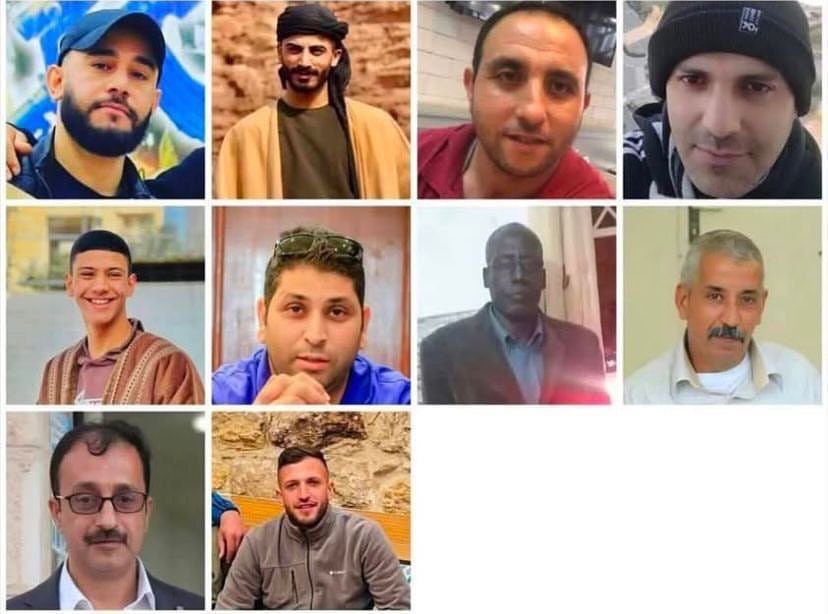
11.
12.
**Photos**
Toddler injured by shrapnel
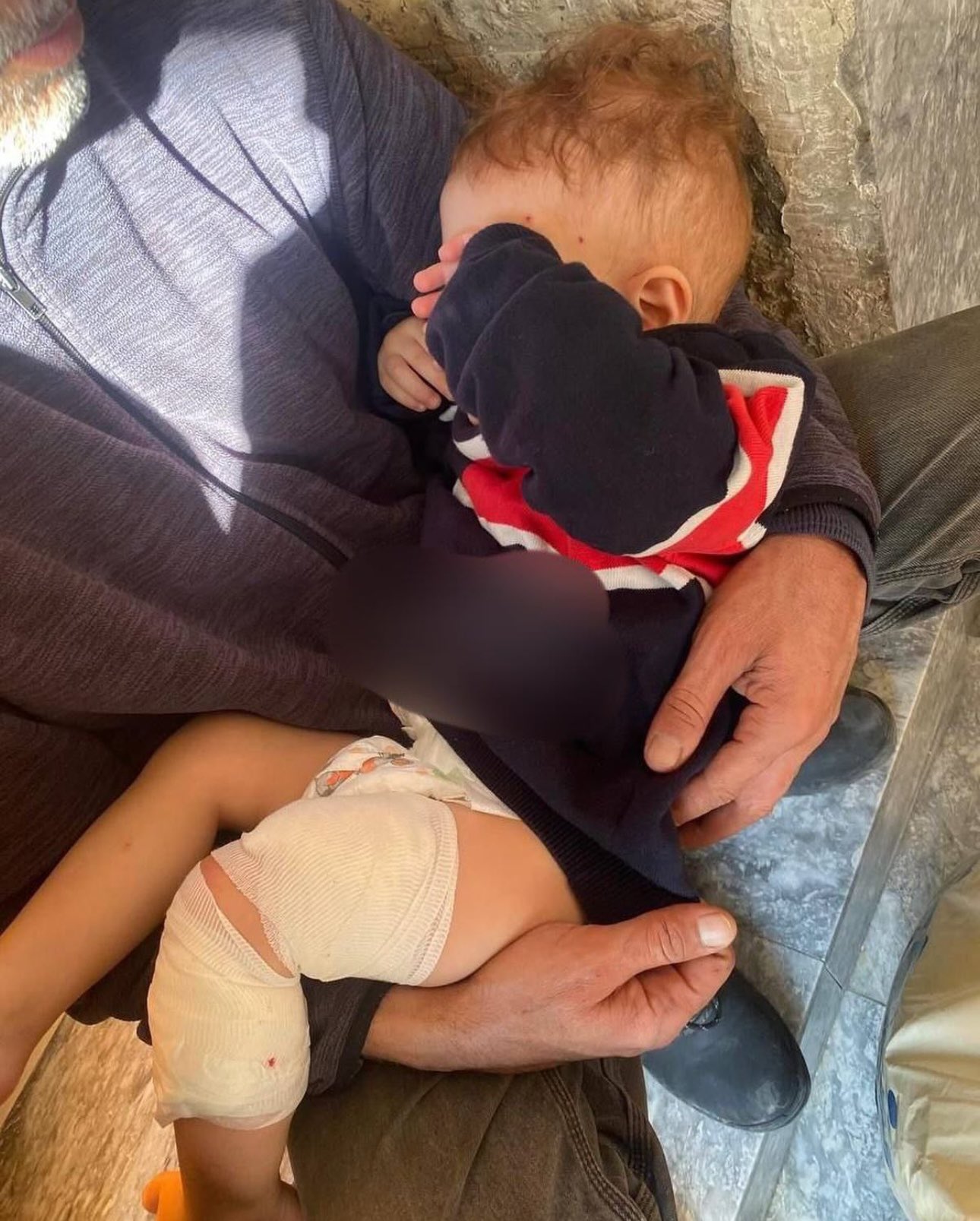
Raid and mass arrest in Beit Furik & Azzun
West Bank, Nablus, Beit Furik, Azzun
20 Jan, 2025 - 21 Jan, 2025
**On January 20, 2025**, during the night, dozens (~65) of Palestinians were detained by Israeli soldiers in Azzun, Qalqilya Governorate, occupied West Bank. Footage shows dozens of detained Palestinians, most of them lying down next to Israeli soldiers, close to the Azzun Grand Mosque.
Another video shows 65 (to my count) Palestinians walking down one of the main streets alongside Israeli soldiers. Additionally a child can be seen at the end of the video walking next to a soldier. Looking at distinctive clothing, several detained Palestinians appear to match with the ones humiliated and abused. Several other videos and photos show the group of detained Palestinians on other locations on the same road, walking north.
**Perpetrators:**
A reporter of the Israeli right-wing Channel 14, Hallel Bitton Rosen, reported that the Shimshon Battalion carried out the detentions of "suspicious" Palestinians after a molotov cocktail was allegedly thrown at the soldier.
The Shimshon Battalion (92th) is part of the [Kfir Brigade](https://www.idf.il/en/mini-sites/our-corps-units-brigades/kfir/kfir-brigade) (900th), the largest infantry brigade in the Israel Defense Forces, that operates under the Central Command. Kfir soldiers wear camouflage berets and red boots. The brigade is composed of five battalions that are stationed in West Bank. The brigade trains in "urban and guerrilla warfare, specializing in complex areas".
**On January 21,** The Israeli armed forces raided the village of Beit Furik, east of Nablus, in the early hours of the morning,
The Israeli forces have detained at least 13 Palestinians from the villages of Azzun and Beit Furik.
The occupation forces arrested and detained the young man Fahmi Nael Hanani
They carried out field investigation operations for dozens of young men, accompanied by widespread abuse, attacks and threats, in addition to acts of vandalism and destruction in more than 15 citizens' homes.
This systematic policies used by the Israeli forces in the occupied territories is the most prominent tools of the policy of collective punishment, which also constitutes a central tool for the occupation in targeting citizens.
Summary execution of 14 y/o Ahmad Rashid Jazzar in Sebastia
West Bank, Nablus, Sebastia
20 January, 2025
At least 1 martyred
**On Sunday, January 19, 2025**, Israeli forces shot and killed a Palestinian child after storming the town of **Sebastia, northwest of Nablus in the northern occupied West Bank.**
Ahmad Rashid Rushdi Jazar, 14, was killed on the evening, after occupation forces shot him with live ammunition. The Palestinian Red Crescent Society (PRCS) reported that its ambulance crews transported a child to the hospital after he sustained a live gunshot wound to the chest; he later succumbed to his wounds.
According to Mohammad Azem, the Mayor of Sebastia, the Israeli forces firing live rounds, tear gas canisters, and concussion grenades at citizens and their homes, shooting and killing the child, Jazar, and causing several others to suffer inhalation injuries.
During the scenes from the funeral of Ahmad Rashid Jazar, his mother was seen carrying the body in the funeral procession
**Statement of UN Human Rigths Office**
International Observer as The UN Human Rights Office were alarmed by increased violence from settlers and Israeli security forces in the Occupied West Bank, coinciding with the Gaza ceasefire agreement and the release of detainees. This includes heightened movement restrictions for Palestinians, such as checkpoint closures and new gates. Israeli security forces also raided several Palestinian towns, killing a 14-year-old boy in Sebastia.
Child and man shot dead in Rafah
Gaza, Rafah
20 January, 2025
At least 2 martyred
Around 3:30 pm, Israeli snipers shot a child killing him along with another man.
Footage taken by bystanders showed shots being fired at a man trying to drag the body of the killed child.
**Names of the martyrs:**
1. Nader Ajlan
2. Zakaria Hamid Yahya Barbakh (child)

West Bank prisoners released as part of the ceasefire agreement
West Bank, Ramallah, Ofer prison
19 Jan, 2025 - 20 Jan, 2025
**On January 19,** at the end of the evening, the Israeli released the Palestinian captives from the West Bank as part of the ceasefire agreement finally began.
Most of these individuals have not been charged or tried : activists, lawyers, doctors, teachers, mothers and students are detained under the pretense administrative detention, while the journalists are held on the dubious charge of incitement.
Palestinian detainees were released from Ofer prison hours after Israeli captives were released from Gaza. Israel delayed the release to prevent celebrations, but the people remained undeterred. A total of 90 Palestinian detainees were freed, and buses have arrived in Beitunia, Ramallah, where they are being welcomed as part of the exchange deal.
Due to the delay in the release of 90 Palestinian hostages (including 20 children), intense clashes erupted at Beitunia’s Schools Roundabout. Israeli forces stormed the families' waiting area, using rubber-coated bullets and tear gas to prevent celebrations. At least 7 injuries have been reported as families awaited their loved ones near Ofer Prison. The delay is believed to be caused by the absence of one female prisoner from the agreed-upon list.
**Khalida Jarrar**, the Palestinian political prisoner, just got out of solitary confinement. Jarrar’s father, daughter and nephew all died while she was prison, and Israeli Security forces prevented her from attending any of their funerals.
**All the Jerusalemite prisoners arrived at their homes accompanied by the occupation police**, with soldiers and special forces around their homes :
1) Freed Zeina Barbar arrives at her family home, but Zionist thugs continue to surround the captives' homes, enforcing harsh conditions and preventing any moment of joy or celebration.
2) The child Rose Khweis arrives at her family home, escorted by her father, as Zionist thugs continue to enforce restrictions outside.
3) The child captive Fahmi Faroukh arrived at his family home.
According to The Wadi Hilweh Information Center - Jerusalem the released prisoners are :
- Nawal Fteiha, sentenced to 8 years in prison,
- Abla Sa’adat, 69 years old "administrative detention",
- Tamara Abu Laban, sentenced to one year in prison,
- Tahrir Jaber "administrative detention",
female prisoners under arrest:
- Zeina Barbar,
- Latifa Msha'sha',
- Aseel Eid.
- Adam Al-Hadra, sentenced to 34 months in prison,
- Thaer Abu Sarah,
- Mahmoud Aleiwat,
- Fahmi Farroukh,
- Qasem Ja'afra,
- Firas Al-Maqdisi,
- Issam Abu Diab.
**The liberated Palestinian young women from Birzeit University students**, from left: media students Amal Shujaiya, Shatha Jaraba, a Biology and Biochemistry major, and Wafa Nimr, raise the victory sign from inside the buses at the moment of their liberation

**Palestinian mother, Murjana Mohammed Mustafa Hreash**, mother of Nasser (5 years old) and Mohammed (3), is freed after being abducted on March 10, 2024.

**Inhuman conditions imposed by Israel**
Families were forced to sign unfair conditions, including not showing joy at the release of their children. To protect their loved ones, they are avoiding media contact to prevent interference with their release or potential re-abduction. All Jerusalemite captives have returned home, escorted by Israeli intelligence, with soldiers and special units stationed around their residences. Families were also required to limit household gatherings to immediate family only.
**List of the released :**
The first list of captives scheduled for release on today, 19/1/2025, includes 90 female captives and children.
Among them are :
1. Palestinian human rights activist, Khalida Jarrar.
2. Journalist Rula Hassanein
3. Walaa Tanaja
4. Rawda Abu Ajmiya
5.Haneen Al-Masaeed
(These three were previously released in the captives exchange deal November 2023 before re-abducted shortly after).
6. Nawal Fatiha (Abducted on 21/2/2021. Unjustly sentenced to 8 years in prison.)
7. Aseel Osama Shuhada, University student
8. Tamara Abu Laban,University student
9. Yasmin Abdel-Rahman Abu Srour,University student
10. Jenin Amr, University student
11. Shaimaa Rawajbeh, University student
12. Zeina Majd Barbar, University student
13. Wafa Nimr, University student
14. Saja Zuhair al-Muadi,University student
15. Amal Shujaiya, University student
16. Baraa Hatem Hafez Fuqaha,
17. Lana Fawalha Baraa Hatem Fuqaha
18. Khitam Arif Hassan Habaybeh, Palestinian teacher,
19. Murjana Hreash, Palestinian mother,
20. Dalal Al-Arouri,
21. Fatima Al-Arouri
(They both are the sisters of the leader of the Hamas movement, the martyr Saleh Al-Arouri)
22.Alaa Al-Arouri (the daughter of Fatima Al-Arouri)
23. Journalist Bushra al-Tawil
24. Palestinian writer and author Israa Al-Aboushi
25. Writer Israa Lafi
26. Margaret Al-Rai
27. Dr. Zahra Khadra
28. Abeer Baara
29. The cub Firas Al-Maqdisi, 18,
30. The child Rose Yousef Mohammed Khweis (17 years old)
31. Tahrir Badran
32. Aseel Eid
33. Issam Abu Diab
34. Thaer Abu Sarah
35. Fahmi Faroukh
36. Mahmoud Aliwat
37. Nahil Masalma.
38. Latifa Mshasha,
39. Aya Ramadan
40. Shaima Ramadan, The two sisterS students at An-Najah and Al-Quds Open Universities.
41. The captive medical student, Duha Azzam Al-Wahsh,
42. Dunya Ishtia, a student at the Faculty of Sharia at An-Najah University,
43. Educator at Birzeit university, Hadeel Hijaz
44. Abla Sa'adat ( She is the wife of imprisoned leader Ahmad Saadat,)
45. Dania Hanatsheh (She was previously released in a captive exchange deal in November 2023 before the vile zionist terrorists re-abducted her again shortly after).
46. Rasha Hijjawi
47. Salah Hijawi, released in the November 2023 captive exchange deal, she was re-abducted and thrown under the so-called administrative detention without trial or charge,
48. Nidal Salah, a mother of three and a lawyer, is the wife of captive Muhammad Al-Zoghaibi, who has been detained since 6/5/2023 without trial or charge.
49. Maysar Faqih, a 60-year-old leader of the Popular Front and Palestinian feminist, was abducted last September and sentenced to the pretense of administrative detention without trial or charge.
50. Alla Jodeh
Pogrom in Sinjil and Ein Siniya
West Bank, Ramallah, Sinjil
19 January, 2025
On January 2025, on the first day of the ceasefire and while hostage deal was being implemented in Gaza, a group of Israeli settlers raided the Palestinian village of Sinjil north of Ramallah in the central occupied West Bank ostensibly to disrupt celebrations over the expected release of 90 Palestinian prisoners under the Gaza ceasefire agreement.
The illegal settlers torched a home and two vehicles, including one that was holding gas containers, which caused a major blast. They attacked the northern outskirts of the town, setting fire to four Palestinian vehicles, and pelting stones at four houses.
A 86-year-old man had been in the home that was torched but was rescued in time and is being rushed to the hospital for treatment.
En route to the hospital, his ambulance is reportedly held up at an Israeli military checkpoint.
There are also no reports of arrests.
Ceasefire day massacres
Gaza City, Khan Younis, Rafah
19 January, 2025
At least 19 martyred
Despite Israel agreeing to enforce a 42-days long ceasefire starting Jan 19 at 8:30 am local time, Israeli forces launched a series of attacks in the first moments of the ceasefire targeting both civilians and security forces deployed to maintain public order and preserve their safety.
The IDF spokesperson claimed it would not cease its attacks until it receives the names of the captives to be released in the first day. The Israeli government only officially announced abiding by the ceasefire starting 11:15 am after receiving the names.
This led to the murder of about 20 people across Gaza City and the two southern governorates, Khan Younis and Rafah.
---
Chronology of key events:
- 9 am: **Injuries** reported after civilians were shot in the Shaboura camp and Al-Awda roudnabout in **Rafah**
- 9 am, Gaza City: **3 brothers killed** in Al-Shaaf neighborhood, east of **Gaza City**
- 9:15 am: **Injuries** from drone gunfire at Al-Najma roundabout, **Rafah**
- 10:30 am: **7 police members killed** in an **airstrike on a vehicle** on Al-Qassam Street in **Khan Younis**

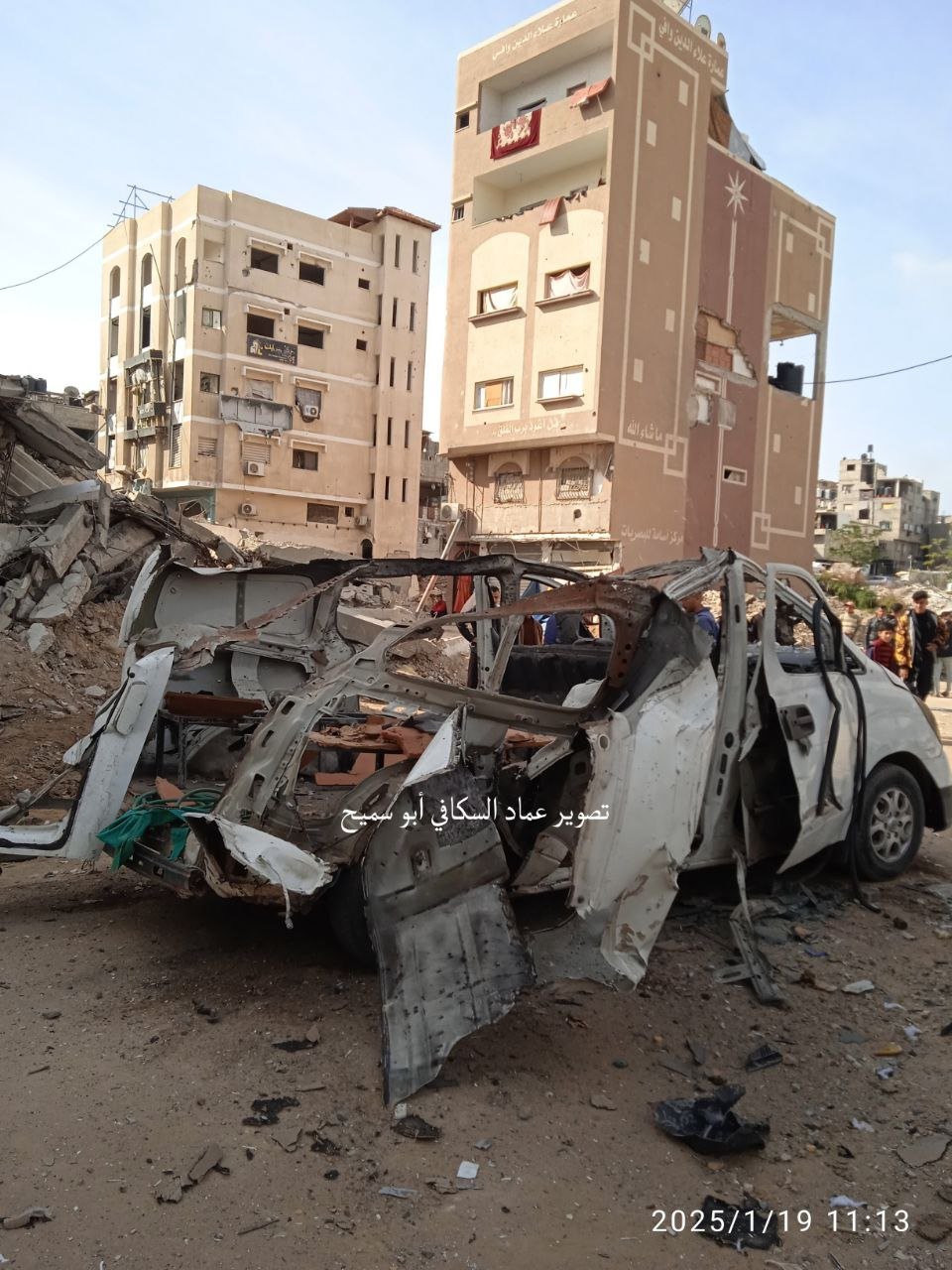
- 11:30: Man killed by drones in Rafah
- Midday: **Young man killed** in Rafah. Journalist Saleh Al-Jafarawi recorded the incident where he was seen along with civilians running away from Israeli tanks and gunfire. Saleh explained that the group of people were about 1 km away from the Philadelphi axis, beyond the limit set out in the ceasefire agreement whereby Israeli troops would remain within 700 metres of the axis, which is the area people were prohibited from approaching.
**Names of the martyrs:**
1. Firas Iyad Al-Najjar (Khan Younis vehicle)
2. Muhammad Atef Abu Harbid (Khan Younis vehicle)
3. Yousef Kassab (Khan Younis vehicle)
4. Zohdi Abd Bakr (Khan Younis vehicle)
5. Abdurahman Saad Al-Najjar (Khan Younis vehicle)
6. Raafat Saleh Al-Tarabin (Khan Younis vehicle)
7. Tayseer Muhammad Al-Madhoun (Khan Younis vehicle)
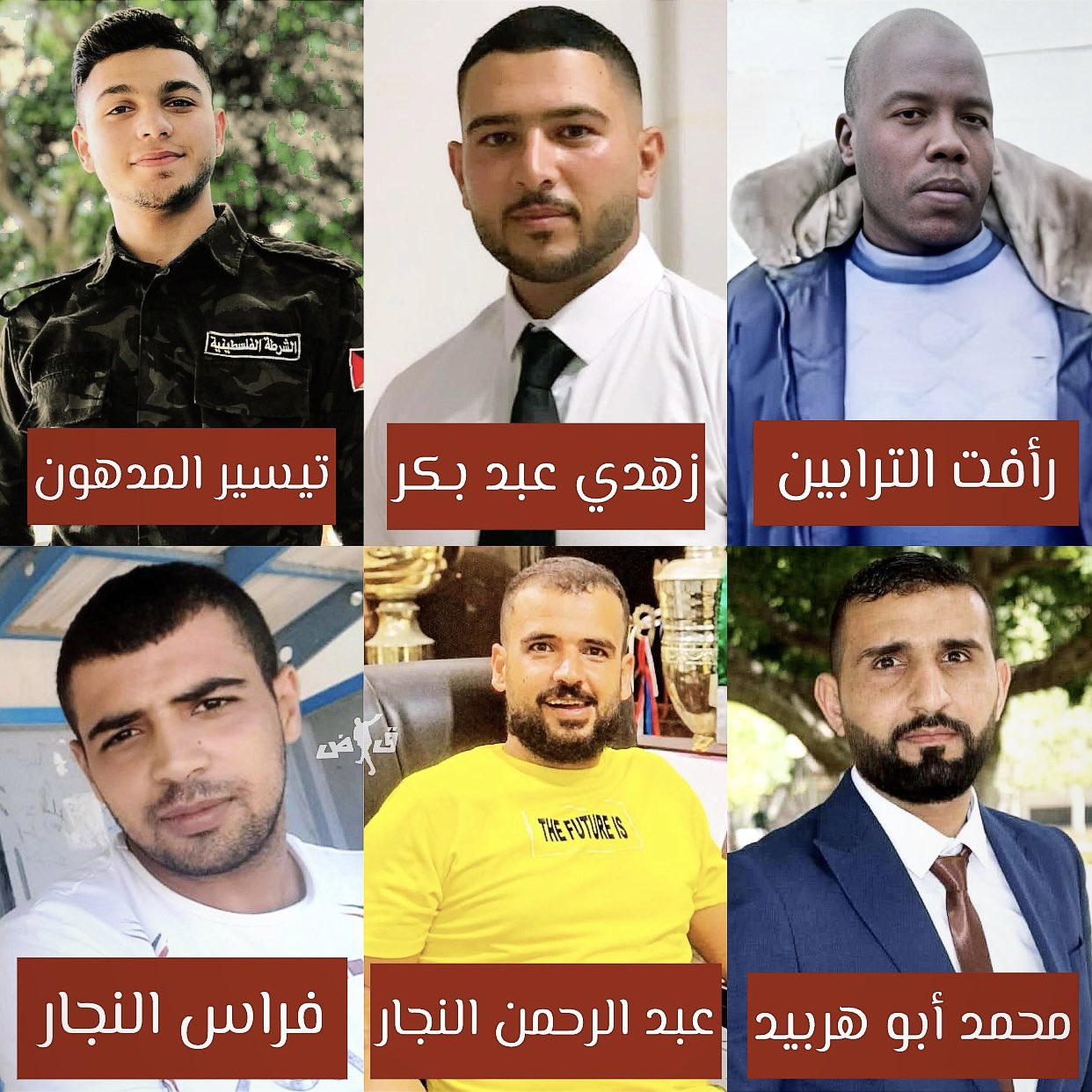
8. Mahmoud Aliwa (Al-Shaaf neighborhood)
9. Muhammad Aliwa (Al-Shaaf neighborhood)
10. Ahmad Aliwa (Al-Shaaf neighborhood)
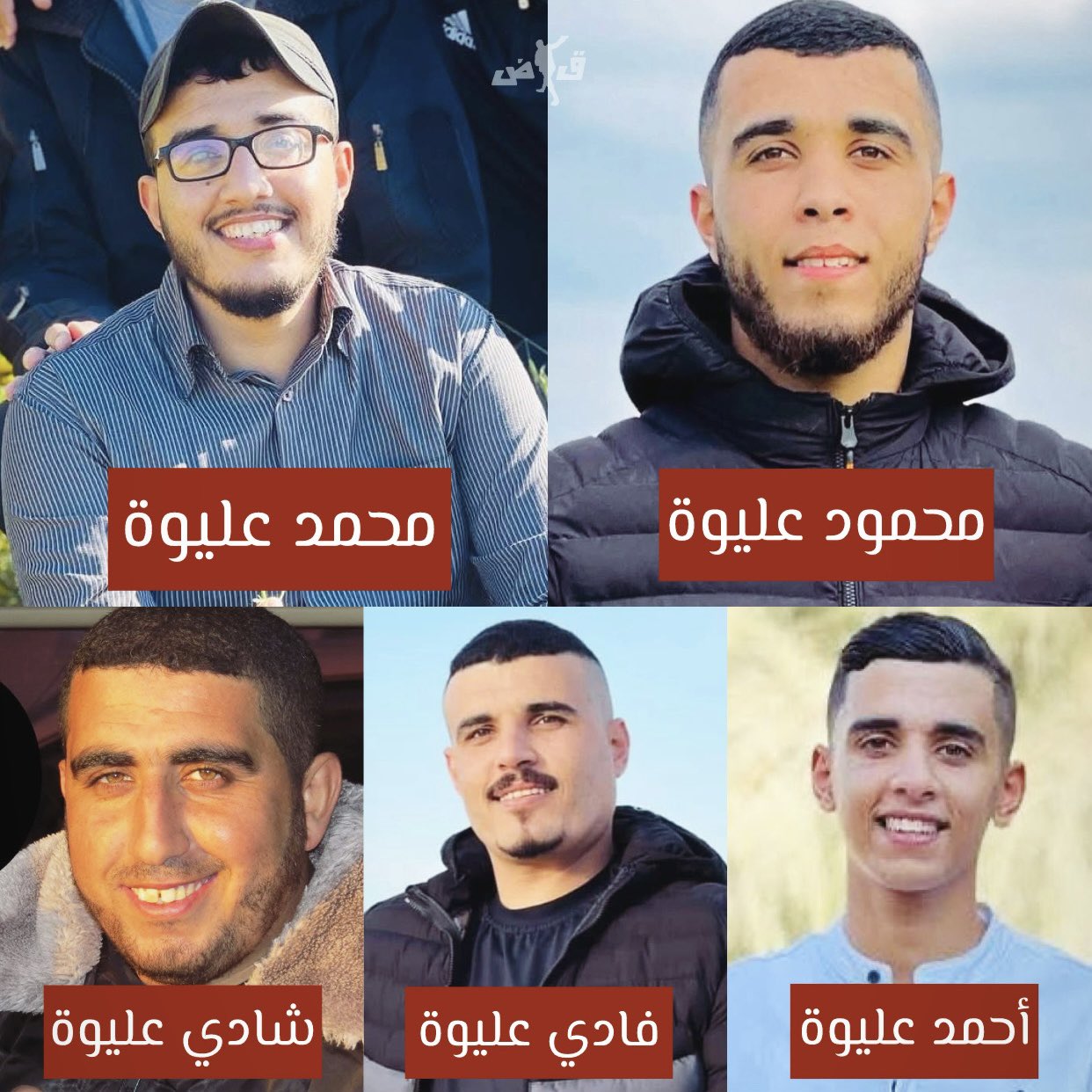
11. Hadya Ali Ahmed Al-Najjar (southern Gaza)
12. Abdurahim Ziad Abdulhamid Abu Omar (southern Gaza)
13. Wael Rasmi Hussein Al-Najjar (southern Gaza)
14. Ahmed Nafed Hamdan Abu Rok (southern Gaza)
15. Mohammad Thaer Jumaa Amiyesh (southern Gaza)
16. Mohammad Hamada Fathi Qadih (southern Gaza)
17. Diaa Ismail Abu Rjeila (southern Gaza)
18. Yasser Atta Jouda (Rafah, Tal al-Sultan)
19. Moad Awadallah (Rafah, Al-Najma)
20. Amro Talal Al-Najjar (Khuza'a)
21. Nidal Nidal Muhammad Al-Najjar (Khuza'a)
22. Ishraq Tareq Al-Najjar (Khuza'a)
Portraits of Khan Younis martyrs:
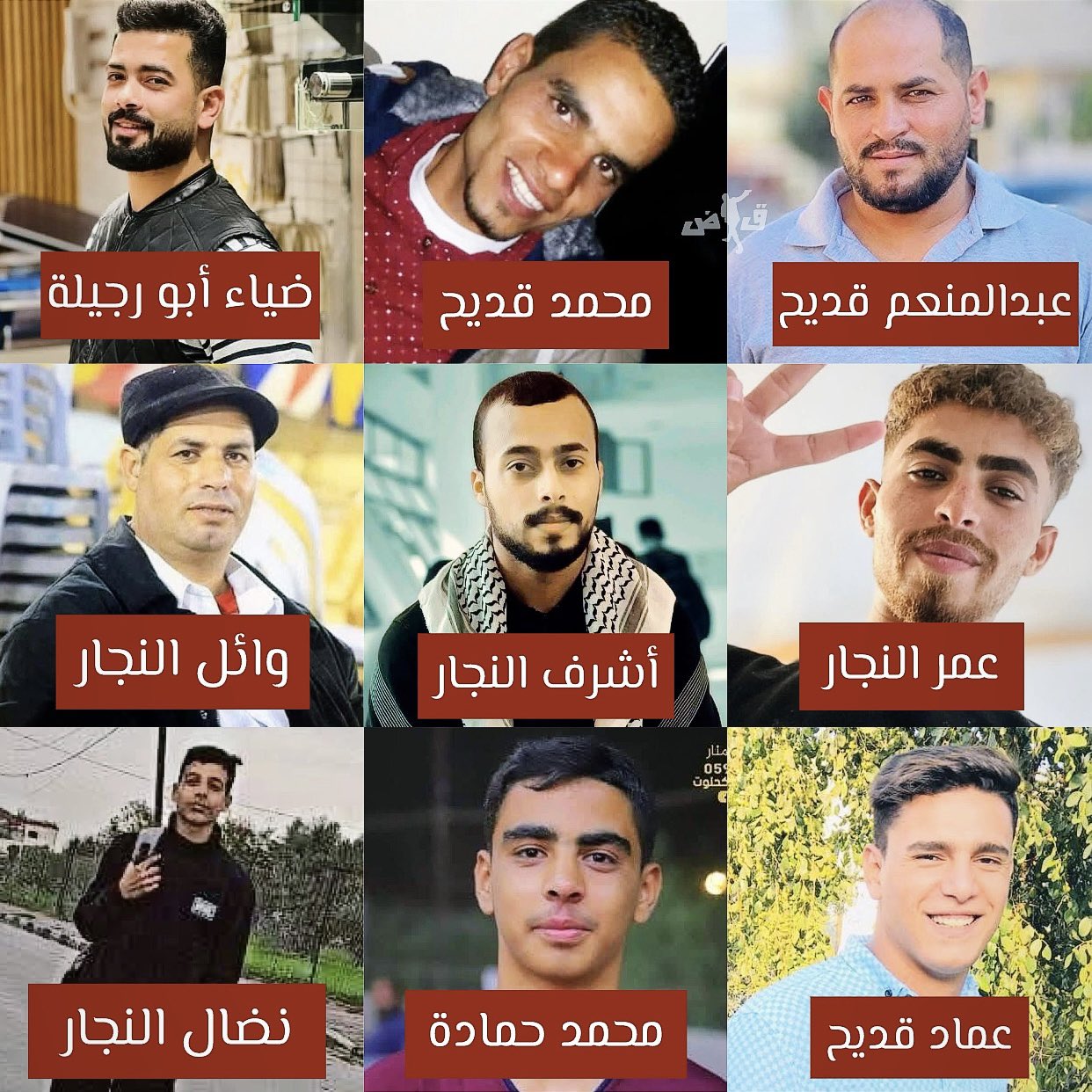
Portraits of Rafah martyrs:
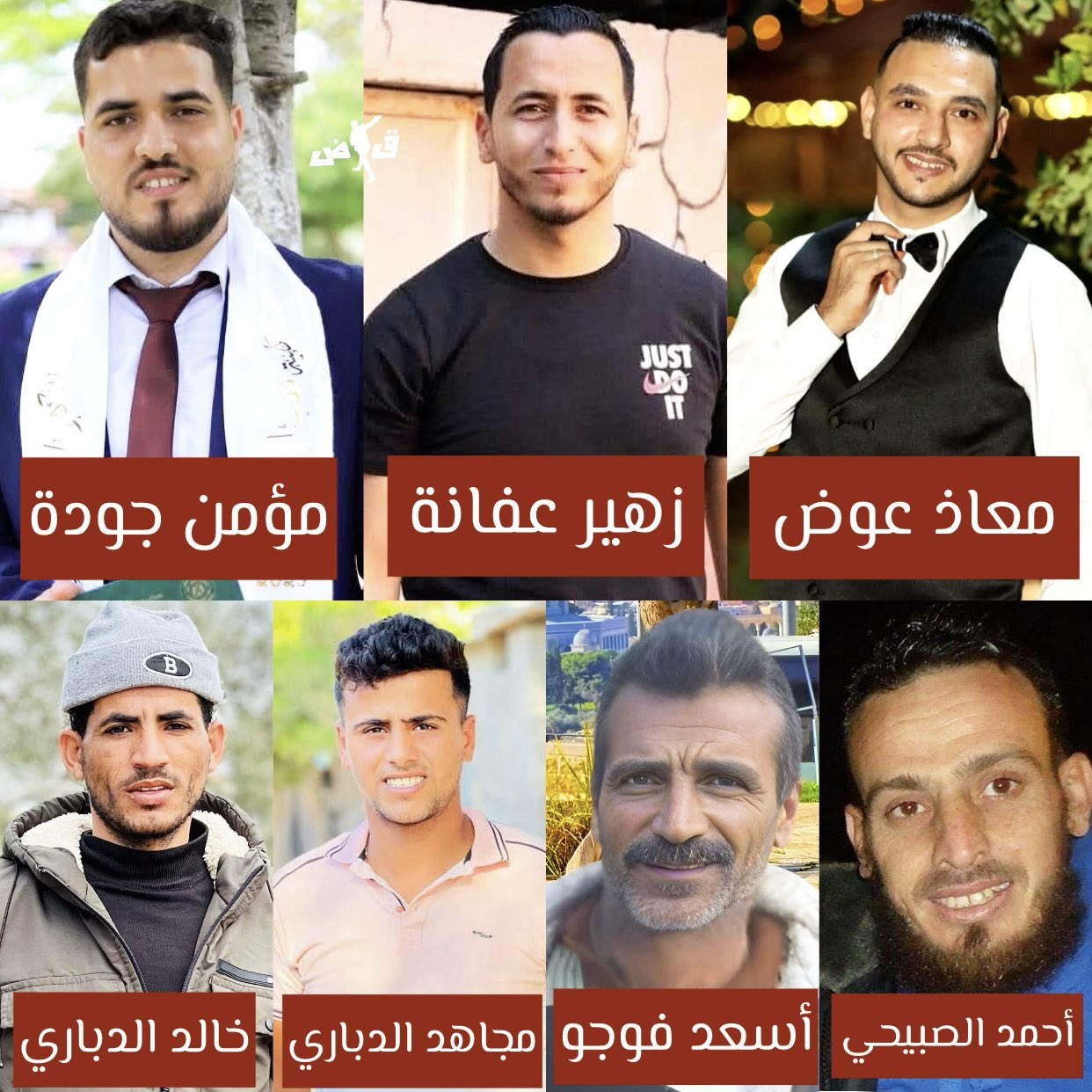
The details for each video come from social media. None of it has been verified.



